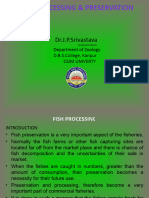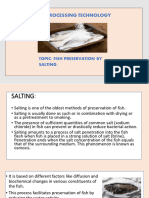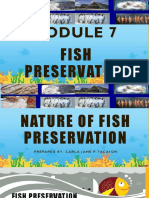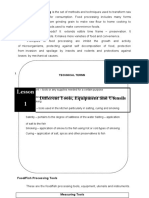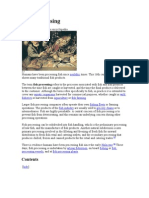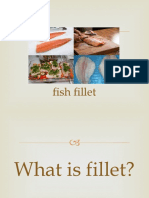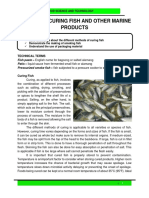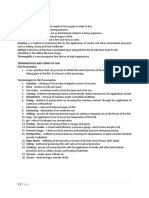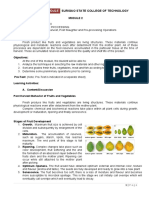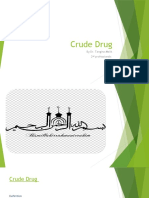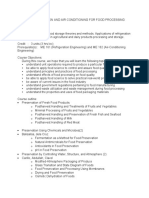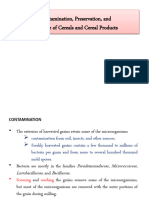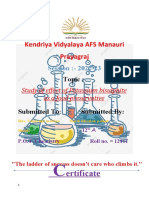0% found this document useful (0 votes)
281 views24 pagesFish Processing: By: Laureno, Divina Villaver Dela Cruz, Cedrick P. Estor, Vanessa R
Fish processing involves preparing seafood and freshwater fish for human consumption. It commonly refers to finfish, mollusks, and crustaceans from marine and freshwater environments. Modern fish processing methods have encouraged consumption of many fish species worldwide. Key fish processing methods include handling, storage, curing through salting, smoking and drying, canning, and producing battered and breaded products. Proper fish processing requires various equipment for tasks like defrosting, heating, injection, filleting, portioning, and storage to preserve quality and safety.
Uploaded by
Estor, Vanessa R.Copyright
© © All Rights Reserved
We take content rights seriously. If you suspect this is your content, claim it here.
Available Formats
Download as PPTX, PDF, TXT or read online on Scribd
0% found this document useful (0 votes)
281 views24 pagesFish Processing: By: Laureno, Divina Villaver Dela Cruz, Cedrick P. Estor, Vanessa R
Fish processing involves preparing seafood and freshwater fish for human consumption. It commonly refers to finfish, mollusks, and crustaceans from marine and freshwater environments. Modern fish processing methods have encouraged consumption of many fish species worldwide. Key fish processing methods include handling, storage, curing through salting, smoking and drying, canning, and producing battered and breaded products. Proper fish processing requires various equipment for tasks like defrosting, heating, injection, filleting, portioning, and storage to preserve quality and safety.
Uploaded by
Estor, Vanessa R.Copyright
© © All Rights Reserved
We take content rights seriously. If you suspect this is your content, claim it here.
Available Formats
Download as PPTX, PDF, TXT or read online on Scribd
/ 24





